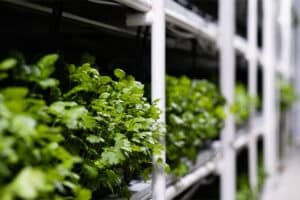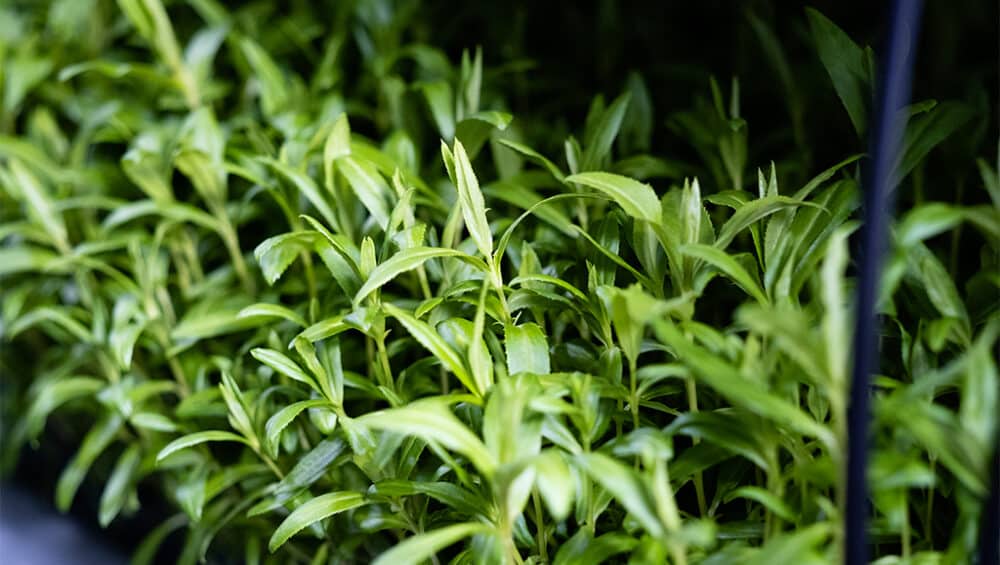In the simplest terms, microgreens are tiny baby greens. They represent the smallest kind of young vegetables and herbs with leaves. Scientific studies have discovered that these miniature green vegetables contain 40 times the nutrition of their mature vegetable counterparts. Microgreens also contain nutrients that may not be present in more mature vegetables. Many microgreens possess an aromatic flavour and concentrated nutrient content, coming in a wide variety of colours and textures. They are sometimes referred to as vegetable confetti, micro herbs, micro vegetables, micro super greens, mini greens, and sometimes just greens.
Baby Greens vs. Microgreens More than Just Small, Young Plants
Microgreens are a type of plant, specifically a young vegetable, positioned between the growth and maturation of seed sprouts, which are younger, and baby greens, which are slightly more mature. Generally, these micro green vegetables are harvested within 14 days after vegetable seed germination, measuring about 1 to 3 inches (2.5 to 7.5cm) in length. Microgreens are rich in nutrients and offer numerous health benefits.
Despite their small size, microgreens are nutritionally dense, containing an abundance of vitamins and natural chemicals such as nitrates, polyphenols, probiotics, antioxidants, and prebiotics. These specific nutrients can diminish in density as vegetables mature and increase in size and mass. Microgreens often contain significantly higher nutrient levels than more mature vegetables and herbs, making them a valuable addition to any diet. They can be sprinkled on meals or added to sandwiches and smoothies. A freeze-dried microgreen powder, such as PCG Everyday, can be an easy, cost-effective, and efficient way to consume all the essential green nutrients for various health benefits.
While microgreens are considered young plants, falling between the maturity of sprouts and baby greens, they should not be confused with sprouts, which lack leaves. Sprouts also have a much shorter growing cycle of 2 to 7 days, whereas microgreens are usually harvested 7 to 21 days after germination, once the plant’s first leaves have emerged but before maturation into baby greens. Baby greens are typically harvested between about 15 to 40 days after germination, depending on the vegetable. In comparison, adult vegetables are generally harvested 45 to 60 days after germination.
 Types of Microgreen
Types of Microgreen
There is a wide variety of microgreens. Some popular types include:
- Amaranthaceae, such as amaranth, beets, quinoa, and spinach.
- Amaryllidaceae family of vegetables, including garlic, leeks, and onions.
- Apiaceae family, such as carrots, celery, dill, and fennel.
- Asteraceae family, including chicory, lettuce, and radicchio.
- Brassicaceae family, such as arugula, broccoli, cabbage, cauliflower, radishes, and watercress.
- Cucurbitaceae family, including cucumber, melon, and squash.
- Cereals like barley, corn, rice, oats, and wheat, as well as legumes like beans, chickpeas, and lentils, are also sometimes grown as microgreens.
Regardless of their type, microgreens are packed with nutrients. While their nutrient contents may vary slightly, most varieties tend to be rich in potassium, iron, zinc, magnesium, and copper. They also tend to express the concentrated qualities of mature vegetables, containing the most beneficial properties of the plant in a potent dose. Research comparing microgreens to mature greens indicates that nutrient levels in microgreens can be up to nine times higher than those found in mature greens. When measuring the nutrients in the microgreens used in PCG Everyday, nutrient levels have been found to be more than 40 times denser by volume. This is likely a result of Pure Concentrated Goodness’ innovative and sustainable hydroponic growth methods.
Health benefits of Microgreens
Microgreens are an excellent source of beneficial plant compounds, such as antioxidants. Their concentrated nutrient content often means they contain higher levels of vitamins, minerals, and antioxidants than the same quantity of mature greens. This means they may contribute effectively to health while needing to be consumed in smaller quantities. Research also indicates that microgreens contain a wider variety of polyphenols and other antioxidants than their mature super greens and vegetable counterparts.
Specific benefits may include but are not limited to:
Reduced risk of Alzheimer’s disease: Antioxidant-rich foods may be linked to a lower risk of Alzheimer’s disease, thanks to their high polyphenol content.
Reduced risk of certain cancers: Antioxidant-rich fruits and vegetables, especially those rich in polyphenols, may lower the risk of various types of cancer. Microgreens, particularly those of broccoli, kale, and red cabbage, exhibit high concentrations of sulforaphane, a chemical known for its anti-cancer properties.
Benefits to those effected by or at risk of Diabetes: Antioxidants may help reduce the type of stress that can hinder sugar from entering cells properly. Lab studies show that fenugreek microgreens can enhance cellular sugar uptake by 25–44%.
Promoting good gut health: Microgreens contain digestive enzymes, prebiotics, and antioxidants that can enhance your gut’s microbiome. Leafy green vegetables also contain a specific type of sugar that supports the growth of healthy gut bacteria.
Reduced Risk of Heart disease: Microgreens are a rich source of polyphenols, which have been linked to a decreased risk of heart disease. Animal studies suggest that microgreens may lower triglyceride and LDL cholesterol levels, both of which are associated with heart disease and an increased risk of heart attacks.
Reduced inflammation: Microgreens naturally contain omega-3 fatty acids with anti-inflammatory properties. Some microgreens, such as red cabbage, also contain compounds that can lower LDL (bad) cholesterol levels, liver cholesterol, and inflammatory cytokines.
How to Use Our Supplement
Microgreens can be eaten raw, juiced, or blended. The versatile powder can be incorporated into a variety of cold and warm dishes. Alternatively, you can get all the benefits at once in a supplement like PCG. This supplement is carefully balanced to meet everyone’s nutritional needs.
If you’d like to explore the health benefits for yourself, you can visit here – Buy Now! For a limited time, we are offering a free one-month trial with no obligation to cancel at any time for our flagship product – PCG Everyday monthly.

